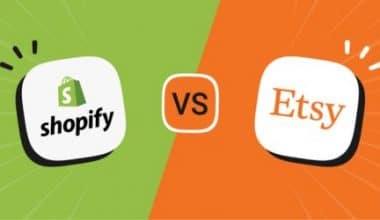A complete and optimal data model contributes to the creation of a streamlined, logical database that removes redundancy, decreases storage requirements, and allows for efficient retrieval. It also provides all systems with a “single source of truth,” which is critical for effective operations and demonstrating compliance with legislation and regulatory standards. Data modeling is an important step in two critical activities of a digital organization. Data models are critical in bringing all segments of a company – IT, business analysts, management, and others – together to collaboratively build information systems (and the databases on which they rely). These systems necessitate correctly defined and formatted data, and models shed light on what data is needed and how it should be arranged to support the intended business activities.
Data Model
Data models are graphical representations of an organization’s data items and the relationships between them. Models aid in the development of effective information systems by assisting in the definition and structuring of data in the context of critical business activities. They allow business and technical personnel to collaborate on how data is kept, accessed, shared, updated, and utilized within a company. Data models are composed of entities, which are the objects or concepts about which we wish to collect data, and they become the tables in a database. Potential entities in a data model include products, vendors, and customers.
A detailed vision of what the finished product will look like and how it will act must be present before planning and creating any software project. The collection of business rules that govern the required functionality is a significant component of that vision. The data description consists of the data flows (or data model) and the database design that will support them. Data modeling preserves the concept and serves as a road map for software developers. After the database and data flows have been completely established and documented, and systems have been constructed in accordance with those specifications, the systems should supply the functionality required to keep the data valid.
Data Model Tools
Data modeling tools assist firms in understanding how to combine and arrange their data – and how it ties to bigger business efforts. Finding the correct one is critical for enhancing the procedures and documentation of software development, analytics, and business intelligence. However, deciding which data modeling tools to use might be difficult.
#1. Draw.io
Consider Draw.io to be the link between pen and paper or whiteboarding and something more formalized. It’s a free, simple, browser-based flowchart maker that allows users to drag and drop entity shapes (such as the ellipses and parallelograms seen in data models) onto a canvas and connect them using connector lines. It’s a rapid method to get anything down, even if you don’t have access to powerful software. It could not make sense in these circumstances when there is a lot of unstructured data.
Key Characteristics:
1. SQL plugin is available.
2. Ideal for financial models
3. The ability to drag and drop entity shapes
#2. Lucidchart
Lucidchart is a diagram maker comparable to Draw.io, but it offers more sophisticated flows and better data security. Unlike Draw.io, Lucidchart’s unlimited plans do not come for free. Because Lucidchart is linked to SQL, users can pipe their canvases into their actual database management system. Because it integrates with Google Workspace, Atlassian, Microsoft Office, Asana, and Slack, Lucidchart promotes collaboration. It also facilitates collaboration through built-in chat, co-authoring, and commenting capabilities.
#3. MYSQL Workbench
This free, open-source, cross-platform data-modeling GUI layer for MySQL databases is known for its simplicity and ease of use. The database architect, developer, and database administrator tool is available for Windows, Linux, and Mac OS X. MySQL Workbench includes data modeling, SQL creation, and extensive administrative tools for server configuration, user management, backup, and much more.
#4. DbSchema
DbSchema is a database design tool that offers both free and paid alternatives and is compatible with a wide range of databases. This also supports data modeling techniques such as creating visual queries, schema synchronization, and automating database processes such as schema deployment, among others. DbSchema can also be used by data modelers to arrange tables in different layouts, generate reports in HTML or PDF format, and compare different databases or scripts to discover errors.
#5. PgModeler
PgModeler is an open-source PostgreSQL database modeling tool that runs on Windows, Linux, and macOS. Although this tool is free for data modelers who want to assemble its source code themselves, individuals who want to purchase a version with pre-compiled binary packages have several possibilities. This application is appropriate for users seeking a variety of features ranging from basic column arrangement to user-defined languages. PgModeler allows users to restore prior database versions, develop models and scripts based on existing databases, and automatically generate columns and constraints by finding available relationships in the database.
Conceptual Data Model
The conceptual data model, also known as the domain model, investigate and detail your high-level, unchanging business structures and concepts. They are most commonly utilized at the start of a new project when high-level concepts and preliminary needs are worked out. They are frequently developed as antecedents to or alternatives to the following stage: logical data models. The most abstract-level or summary-level data model is a conceptual data model. This data model excludes platform-specific information as well as additional implementation information such as interface definitions and procedures. Because of its simplicity, a conceptual data model is valuable. It is frequently used in strategic data projects and for presenting ideas.
A conceptual data model is designed for a business audience and provides extensive coverage of business topics. It is never a solution model and is technology and application-agnostic. In other words, the conceptual data model is a business model from a data standpoint. The conceptual data model is used in business for confirmation and correction. Attributes are usually not introduced to conceptual data models because they are higher-level models. They aid in the establishment of relationships between entities, however, they may lack the null ability and cardinality qualities. Conceptual data models are frequently built to be independent of any data storage technology or database management system (DBMS).
A conceptual data model’s goal is to give a data-driven view of the company by describing how different business units interact with one another. This is frequently accomplished through the use of entity relationship diagrams (ERD) and/or object-role models (ORM). Conceptual data models, unlike logical and physical data models, are independent of technology and application. This means they are disconnected from the reality and context of existing systems and procedures.
Data Model Example
Before storing data in a database, we must create a data model for it. A data model is a graphical representation of data objects and their interactions. It’s similar to an architect’s blueprint in that it helps build a conceptual model. In this post, we’ll look at some real-world data modeling examples.
#1. ER (Entity-Relationship) Model
This paradigm is built on the concept of real-world entities and their relationships. It generates an entity set, a relationship set, a collection of general attributes, and constraints. An entity is a real-world thing in this context; for example, an employee is an entity in an employee database. An attribute is a property that has a value, and entity sets share attributes with the same value. Finally, there is the entity relationship.
#2. Hierarchical Model
This data model organizes the data as a tree with a single root, to which other data is attached. The hierarchy starts at the base and grows like a tree. With a single one-to-many relationship between two different types of data, this model successfully describes numerous real-time relationships.
#3. Object-Relational Model
This model is a hybrid of an object-oriented database and a relational database. As a result, it combines the extensive functionality of the object-oriented paradigm with the simplicity of the relational data model. Data modeling assists firms in becoming more data-driven. This begins with data cleaning and modeling.
#4. Object-Oriented Data Model
Object-oriented data models are a variant of conceptual data modeling in which items are grouped into class hierarchies to make intricate real-world data points more understandable. They, like conceptual modeling, are most commonly employed in the early stages of system development, particularly for data-heavy multimedia technologies.
Logical Data Model
Logical data models, also known as logical schemas, are an extension of the basic structure outlined in conceptual models, but they take into account more relational factors. It has some basic annotations on the overall qualities or data features, but it lacks an in-depth focus on actual data units. This model is very valuable in data warehouse designs since it is fully independent of physical infrastructure and can serve as a blueprint for utilizing data in the system. It enables a visual grasp of the relationship between data points and systems without being too immersed in the system’s materiality. The logical data model combines all of the pieces of information that are critical to the day-to-day operation of the organization.
Logical Data Model Components
A logical data model is made up of three major components:
Entities: Each entity is a collection of items, people, or thoughts that are relevant to a business.
Relationships: Each relationship represents a connection between two of the entities listed above.
Attributes: They are descriptive pieces, characteristics, or any other information that can be used to further characterize an item.
Each of these logical data model components is given a name and a written definition. They are unconcerned about how the aforementioned business needs are handled, executed, or stored. Since data is the most essential part of any application, program, or system, quality data processing, and storage systems must be constructed on a solid and correct data structure. A solid data structure allows application developers to create the best user interface, processing system, or statistical analysis and reporting setup feasible. No matter how sophisticated or technical your system is, it must meet requirements, obey regulations, and serve the aims of the business or enterprise for which it was designed—otherwise it will be useless.
Features of a Logical Data Model
- A logical data model can explain the data requirements for each project. However, it is designed to connect effortlessly with other logical data models if the project requires it.
- The development and design of a logical data model can be done independently of the database management system. It is unaffected by the type of database management system.
- Data characteristics contain specific lengths and precisions for data types.
- No main or secondary keys are defined in logical data modeling. At this level of data modeling, it is necessary to double-check and fine-tune connector details that were established prior to constructing relationships.
What Do You Mean By Data Model?
Data models are graphical representations of an organization’s data items and the relationships between them. Models aid in the development of effective information systems by assisting in the definition and structuring of data in the context of key business activities.
What Are the 5 Data Models?
The five database models are
- Hierarchical Data Model.
- Relational Data Model.
- Entity-relationship (ER) Data Model.
- Object-oriented Data Model.
- Dimensional Data Model.
What Are the 3 Main Components of a Data Model?
Edgar Codd (1980) provides the most detailed definition of a data model: A data model is made up of three parts: 1) data structures, 2) data structure operations, and 3) integrity constraints for operations and structures
What Is a Data Model With Example?
The term “data model” can apply to two distinct but related ideas. It can also refer to an abstract formalization of the objects and connections found in a certain application area, such as customers, products, and orders in a manufacturing company.
How Do You Write a Data Model?
Steps in the Data Modeling Process
- Determine the use cases and the logical data model.
- Make an initial cost estimate.
- Recognize your data access patterns.
- Determine the technical specifications.
- Make a DynamoDB data model.
- Make your data queries.
- Verify the data model.
- Examine the cost estimate.
What Are the Five Steps of Data Modeling?
- Gathering Business Needs
- Entity Identification
- Create a Conceptual Data Model
- Complete the attributes and design the logical data model.
- Create Physical Tables in the Database
How Is Data Modeling Done?
Data modeling is the process of developing a conceptual representation of data objects and their interrelationships. Data modeling often consists of numerous processes, including requirements gathering, conceptual design, logical design, physical design, and implementation.
Conclusion
Data modeling is a method of visually displaying data in graphs and diagrams with varying levels of conceptualization, detail, and complexity. Data modeling comes in many forms and ways, but its main advantage is that it may assist in the design and lead the development of a database-reliant system. You can automate and simplify the majority of the data modeling process, from free, open-source tools to enterprise-ready solutions and platforms, making it more accessible to smaller teams and urgent projects on a restricted budget.
Related Articles
- What Are Analytical Skills? Examples and Tips
- WHAT IS BUSINESS PROCESS MODELING: Top Techniques, Software, Examples, and Courses
- DATA MODELING: Definition, Types, and Techniques





